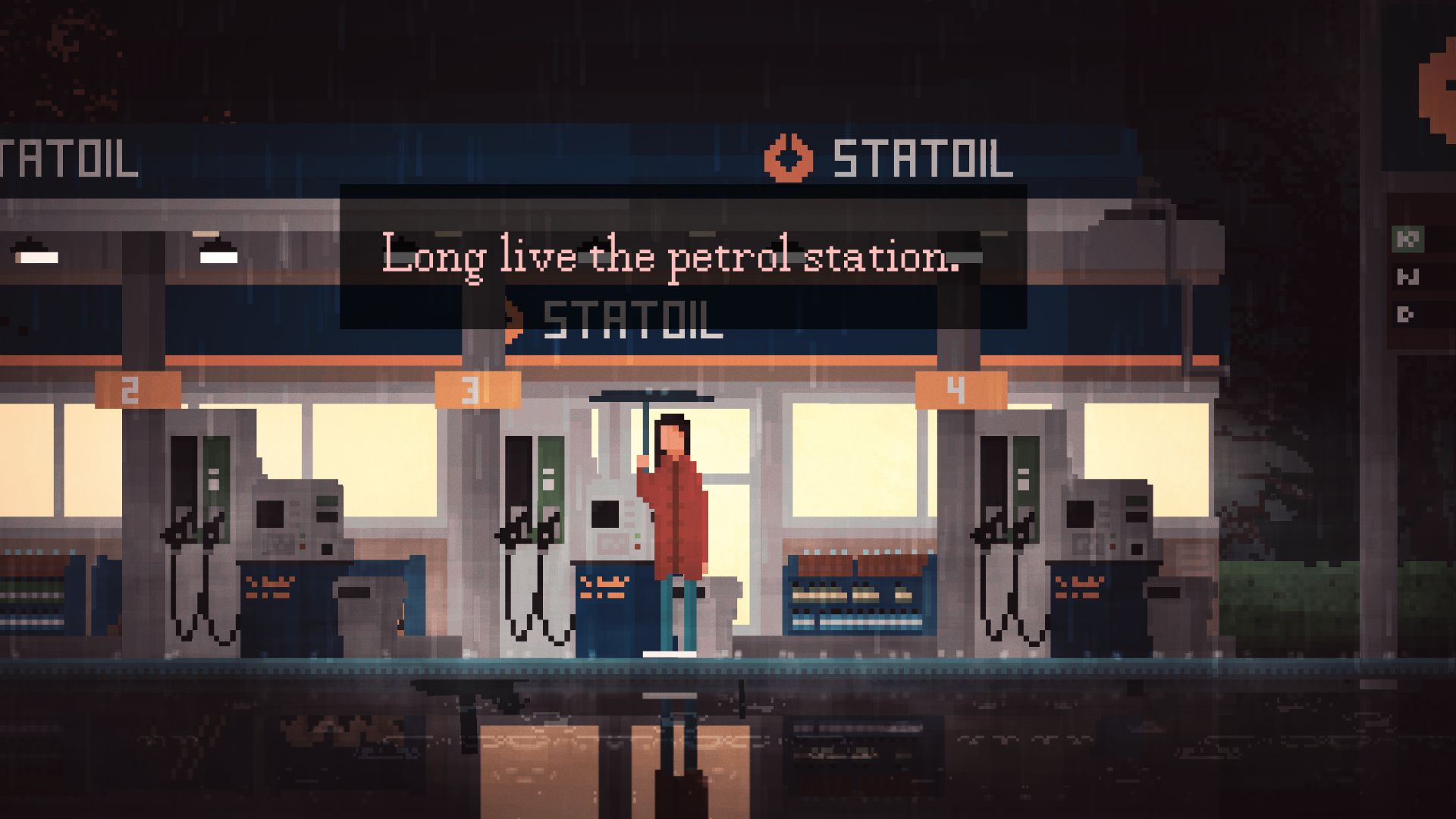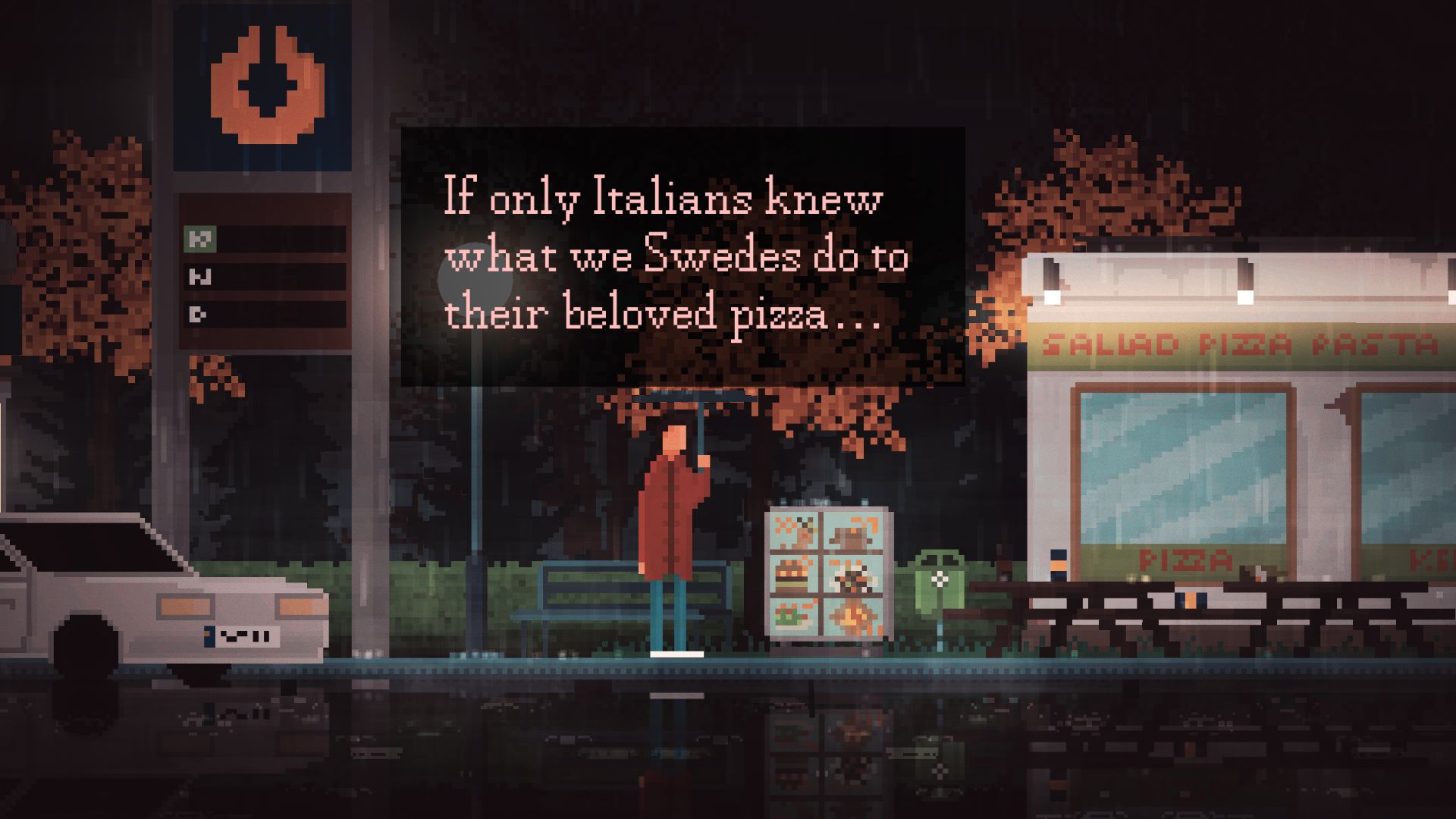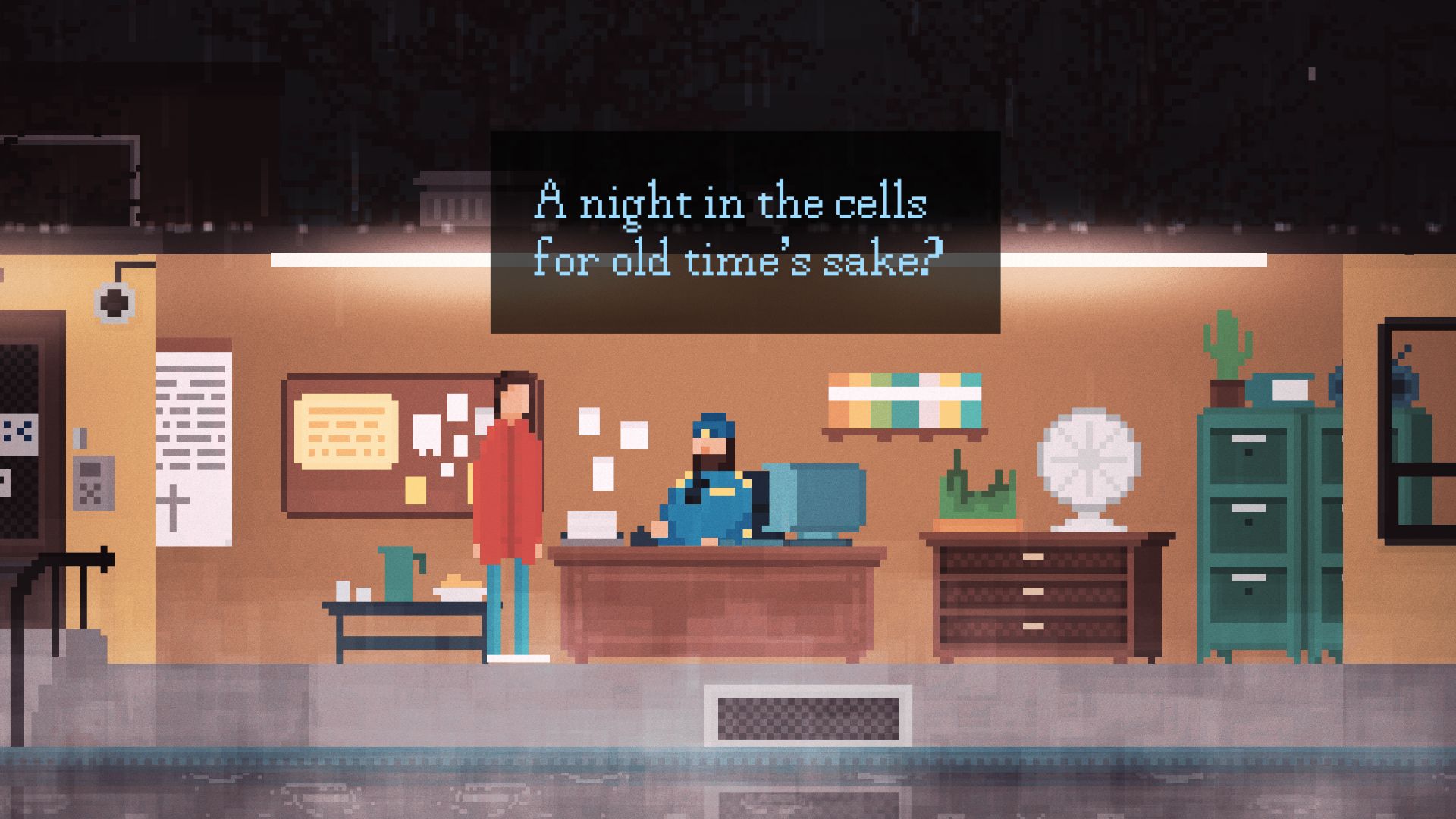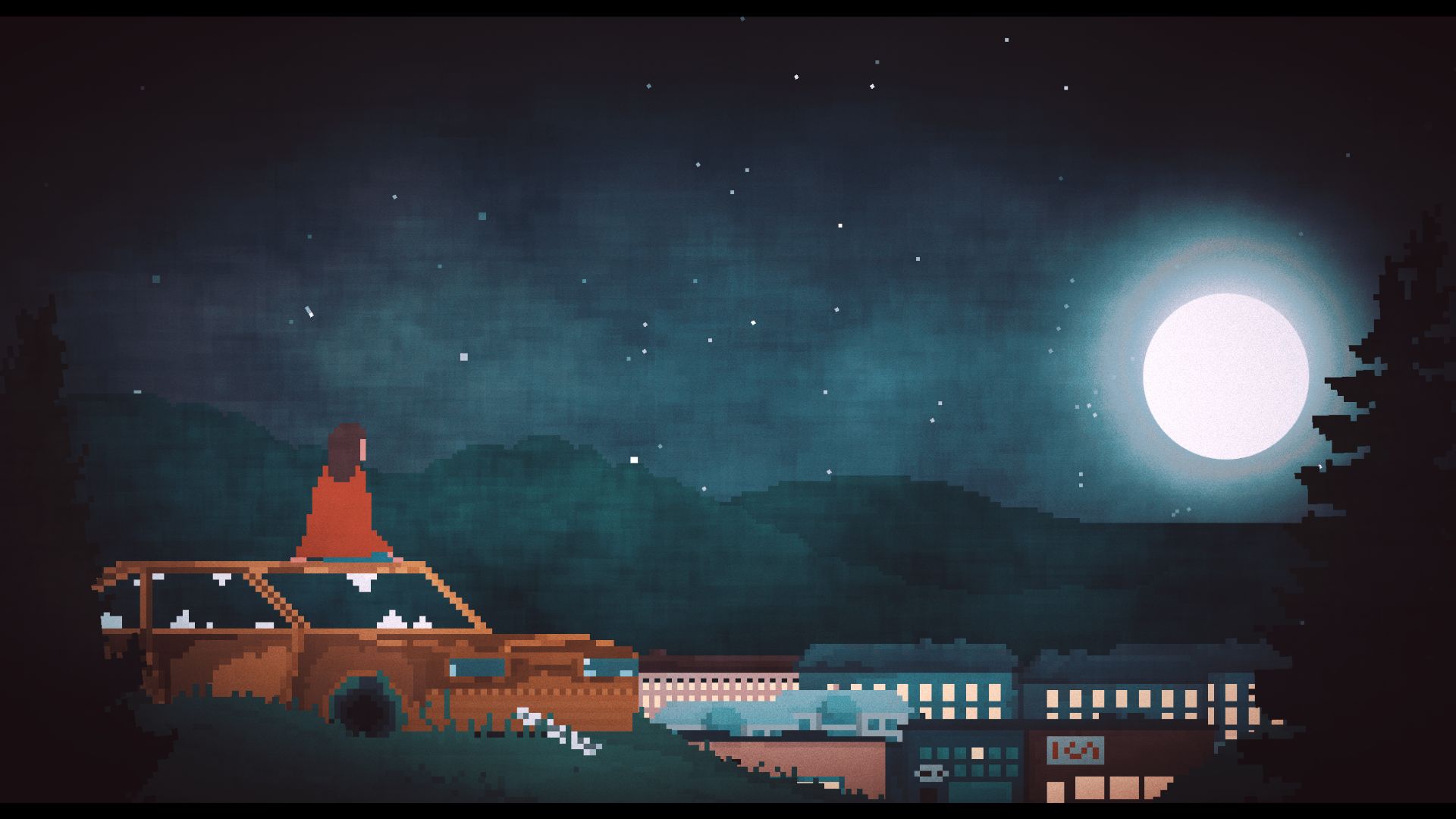Nowadays, it’s all too easy to not be there for the people you love. We move away from our parents, forget to respond to our friends, get caught up in work, and let the whirlwind of life overcome us. Or, at least, some of us do.
There are the country folk and the city folk, and us city folk can get caught up in the loudness of it all, certain it’s all happening exactly where we are. While the countryside is quiet, empty, and moving slowly.
This is the primary conflict presented by How We Know We’re Alive, a videogame developed by Motvind studios, recently released on iOS, also available on Steam. It’s a sub-one-hour story, with minimal interaction and lovely pixel art.
There isn’t much useful to say about How We Know We’re Alive without talking about the story, but talking about details in the story would ruin any reason for playing the game, so let’s start broad, and later we’ll delve into spoiler territory, but that will be clearly signposted, don’t worry.

Supporting the story are the visuals and sound. An original soundtrack by Ivan Starenius bathes everything in an eerie yet warm melancholy. Long, icy drones over subsurface guitar in a tune like ‘Hemmavid’ contrast with the warmth and beauty of the heartwrenching guitar melody just trickling out of ‘Jag har hört om en stad oven molnen’.
It’s a wonderful collection of music, coating everything like a giant, tear-wet blanket. Its subtle, quiet balance is beautiful, and the way it highlights specific story moments is exceptional. In a game this sparse, it becomes a vital feature.
The pixel art is similarly gorgeous, with broad reflections in wet roads and splodgy character designs. The characters’ animation, with their fluid-clockwork movement, brings life simply, in spite of their faceless appearance.
So, How We Know We’re Alive sounds good and looks good, and it’s immediately obvious when you launch the game. Once you press play, the simplicity of the interaction is also apparent.
All you have to do is swipe and hold left or right to choose your character Sara’s direction of movement. Move left or right across a 2D town, find little magnifying glass icons to click on, people to talk to, and learn about the town of Härunga. That’s all there is to do.
Hârunga is proper small-town stuff, an industrial town in the bible belt of mid-north Sweden. It’s full of people Sara hasn’t seen in years, having moved to Stockholm to follow a career as a writer.
While you hop from point to point, you uncover more about the events of the past that led Sara to return. While you don’t have much choice, this slow unfurling of the story is engaging, and the short runtime means you’re not going to get bored.
Anyway, I told you it was coming, so here’s a nice big spoiler warning. If you want to experience How We Know We’re Alive yourself, go pick it up and play it. Then, come back here to hear more of my thoughts on the spoilery stuff.
Sara’s reason for returning to Härungen is to mourn her friend Maria, who passed away a year prior. She leaves flowers on her grave, runs into her sister, and then decides to ask some of the townfolk about what happened.
Maria was planning to join Sara and move to Stockholm so they could both follow the dream of becoming writers. Maria got pregnant, and she decided to keep the baby and start a family with the father.
Believing she’s been forced into this position, Sara blames the bible-bashing nature of the town. So, she leaves town by herself, becomes a copywriter at an ad agency, and largely fails to return Maria’s texts wanting to catch up.
This hangs over Sara, but she starts to suspect a sadder reason for Maria’s death than a simple traffic accident. She finds a receipt for some vodka in her untouched room, hears how Maria invited loads of friends around that evening and starts to think she may have committed suicide, given her proclivity for writing sad poetry.
And she blames the town of Härunga for her friend’s sadness, eventually blurting this out to Maria’s sister. You, as the player, are sort of convinced by Sara’s position, while accepting the presence of the townspeople as difficult and irritating – they are a hurdle to the truth.
After this outburst at Maria’s sister, Sara learns why Maria was on the road that night. She wanted to drive to Sara to tell her the good news, that she’d got a book deal. Sara wasn’t returning her calls, so Maria decides to go in person.
This clash then, which I explained at the beginning, between a young city-dweller who hates police and religion almost as much as each other, versus the slower-living simplicity of the people of Härunga, is the centre of the story.
It works on this level, too. Everything is clear, and the flip from agreeing with Sara to feeling for her is a nice twist. But, the speed at which everything happens does hinder How We Know We’re Alive, to some extent.
We don’t get enough time with Sara to find her evidence-gathering and unempathetic outburst all that reasonable. This means that when the story flips, at least for my playthrough, it fell a bit flat. It felt like something that occurred, not something that hit me.
How We Know We’re Alive’s best meditations happen before the story tries to make you feel something. It simply shows us people, after the death of a close one, reacting in different ways.
Maria’s sister is bitter and cold, her widowed husband is quietly headstrong, sheepishly powering through, and Sara is certain that there’s someone to blame, that Maria can’t have just crashed a car. Sara is trying to find a reason for it all.
This flatness of the story flipping weakens to overall experience somewhat, at least for me. And while it’s still a wonderful 40-minutes-or-so of storytelling, its ending, with Sara sat on a car bonnet on a hill where she and Maria used to drink, feels like it should have a greater impact.
All this said, however, for a videogame to last forty minutes and then make me write that much about it means it’s at least doing something more than a lot out there. It’s telling a deeply melancholic story with steely-eyed sincerity, and I love that. I just feel like it could’ve done a tad more.
How We Know We’re Alive review
How We Know We’re Alive is a beautiful-looking and -sounding story that lasts around as long as a TV show. Just like an episode of TV, it draws you in quickly, but its brief runtime does mean that, by the end, you may not be invested enough for the payoff to hit.

















